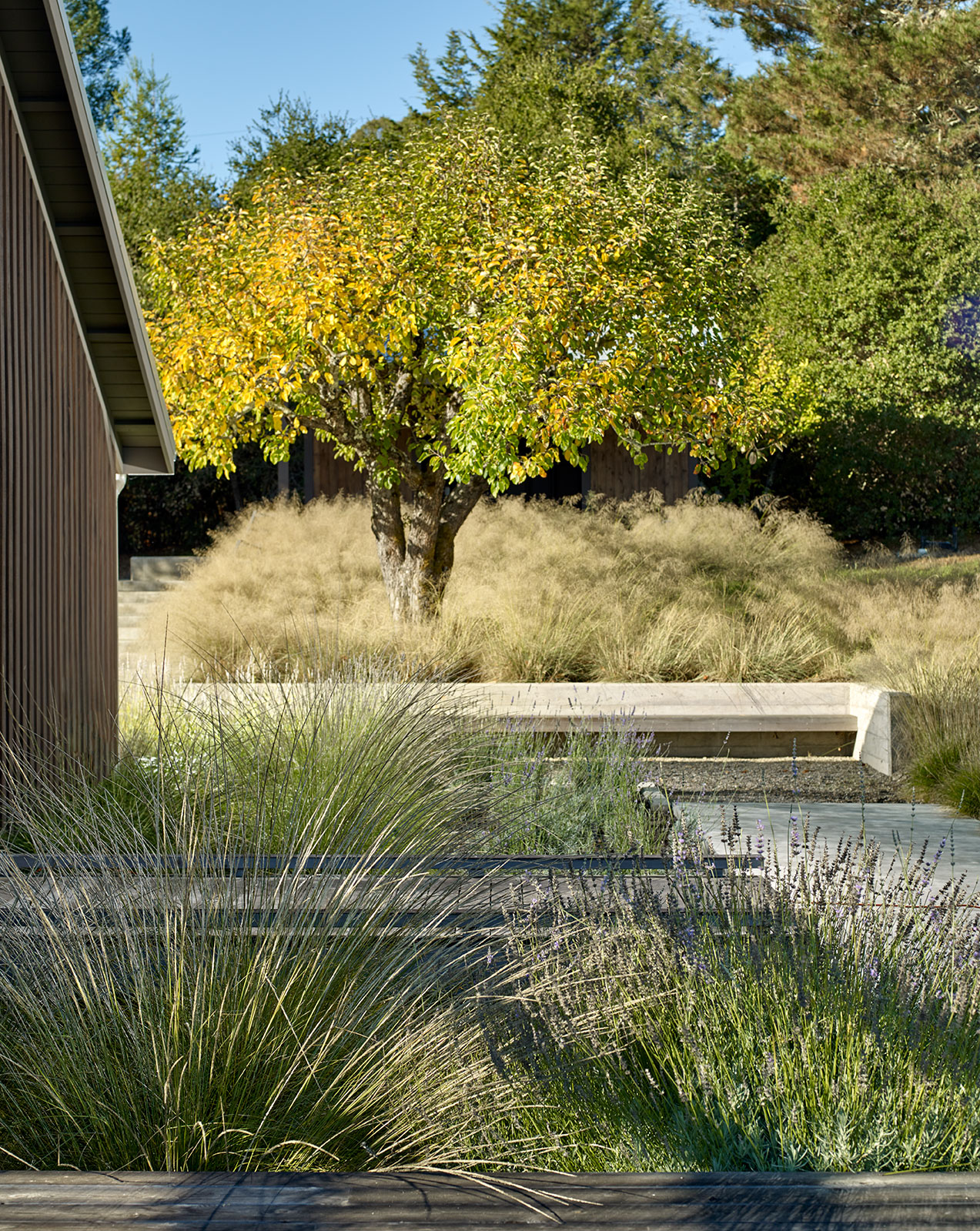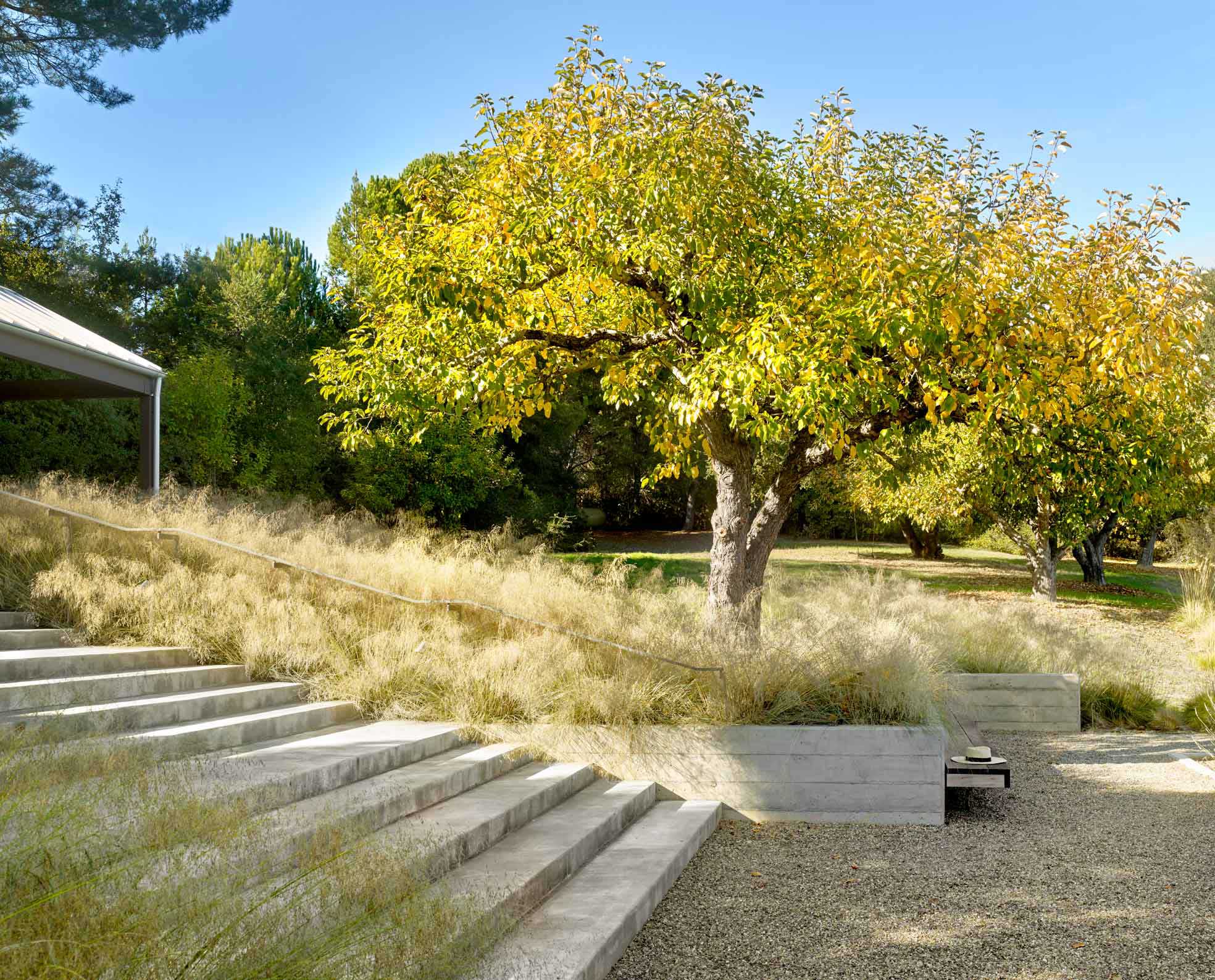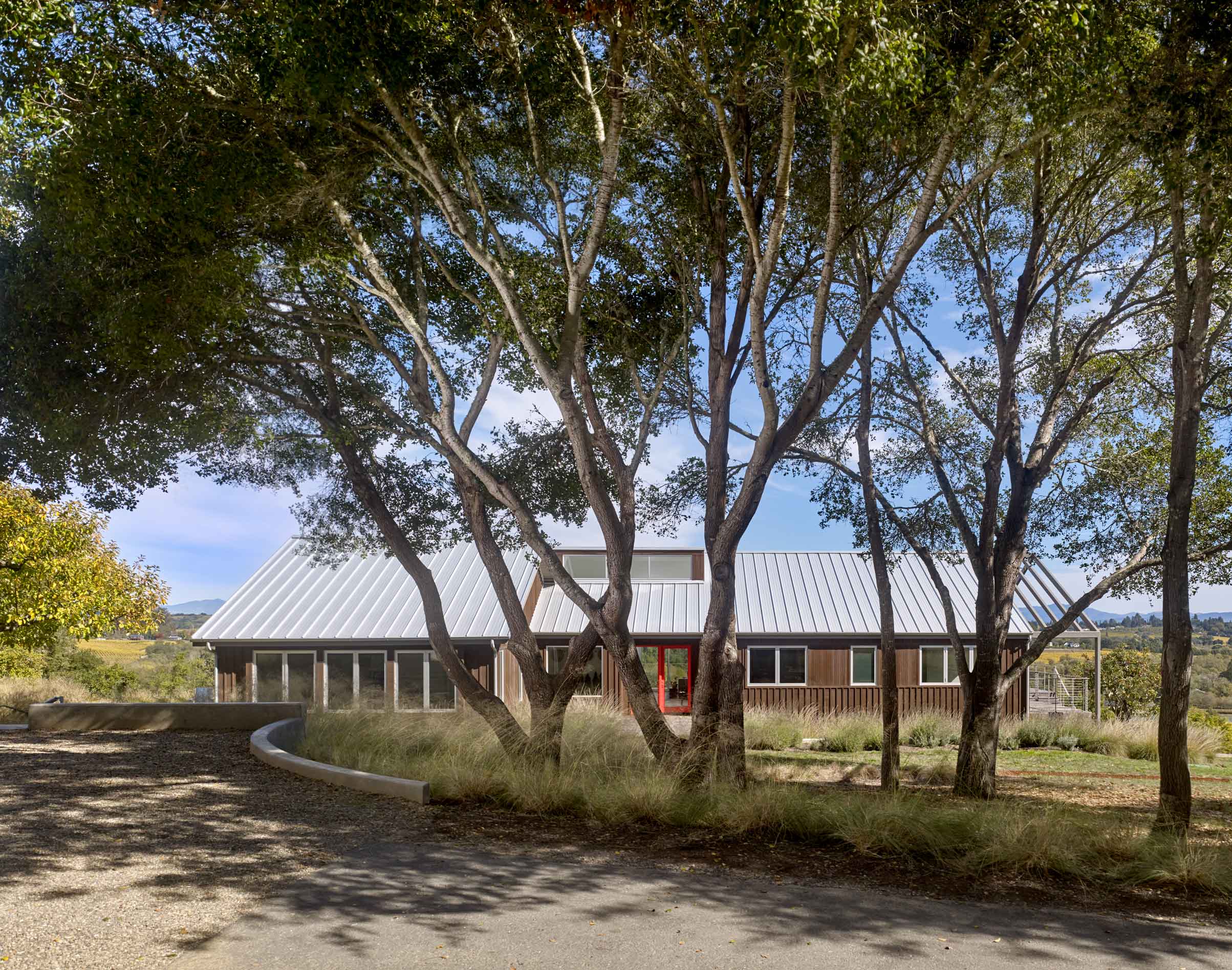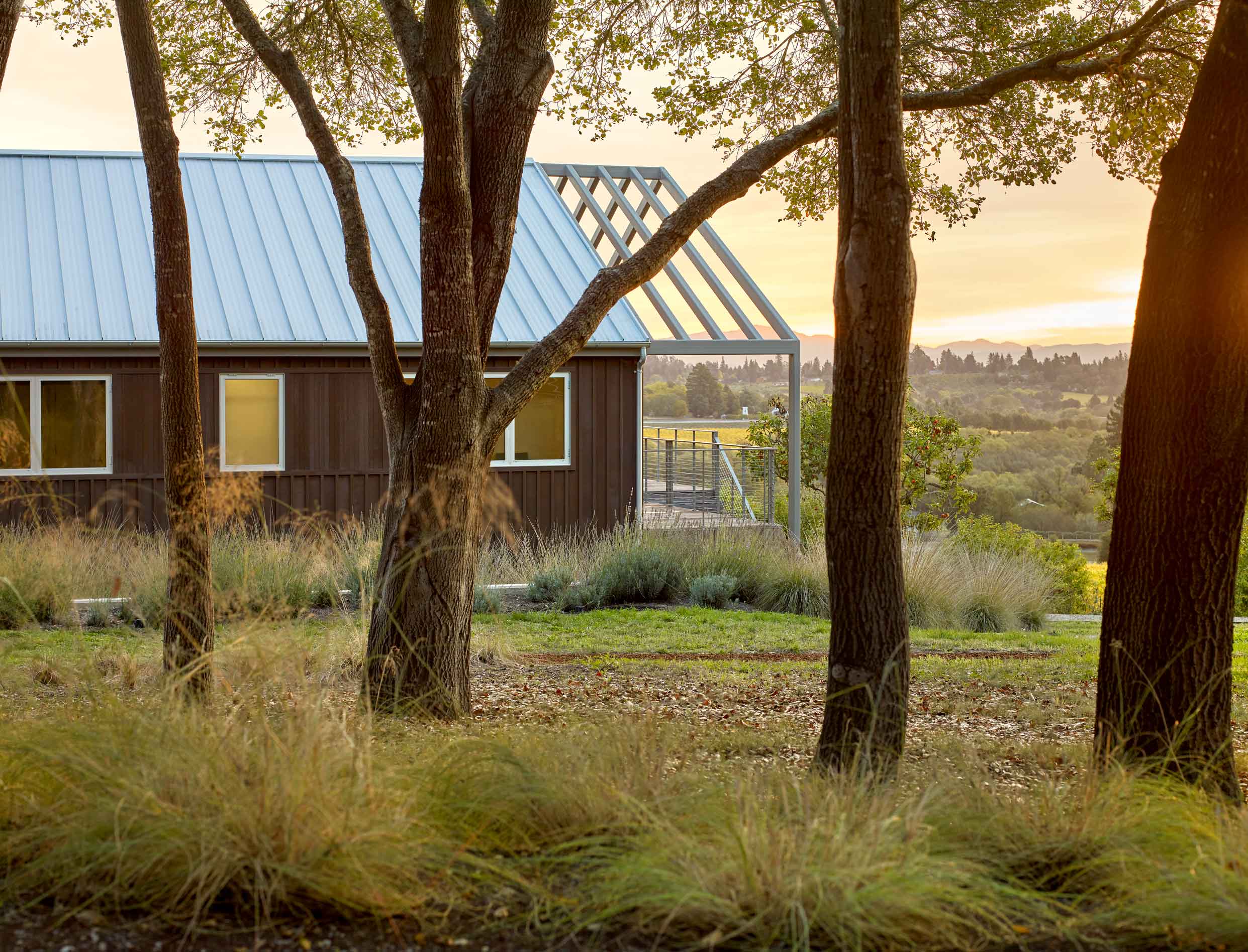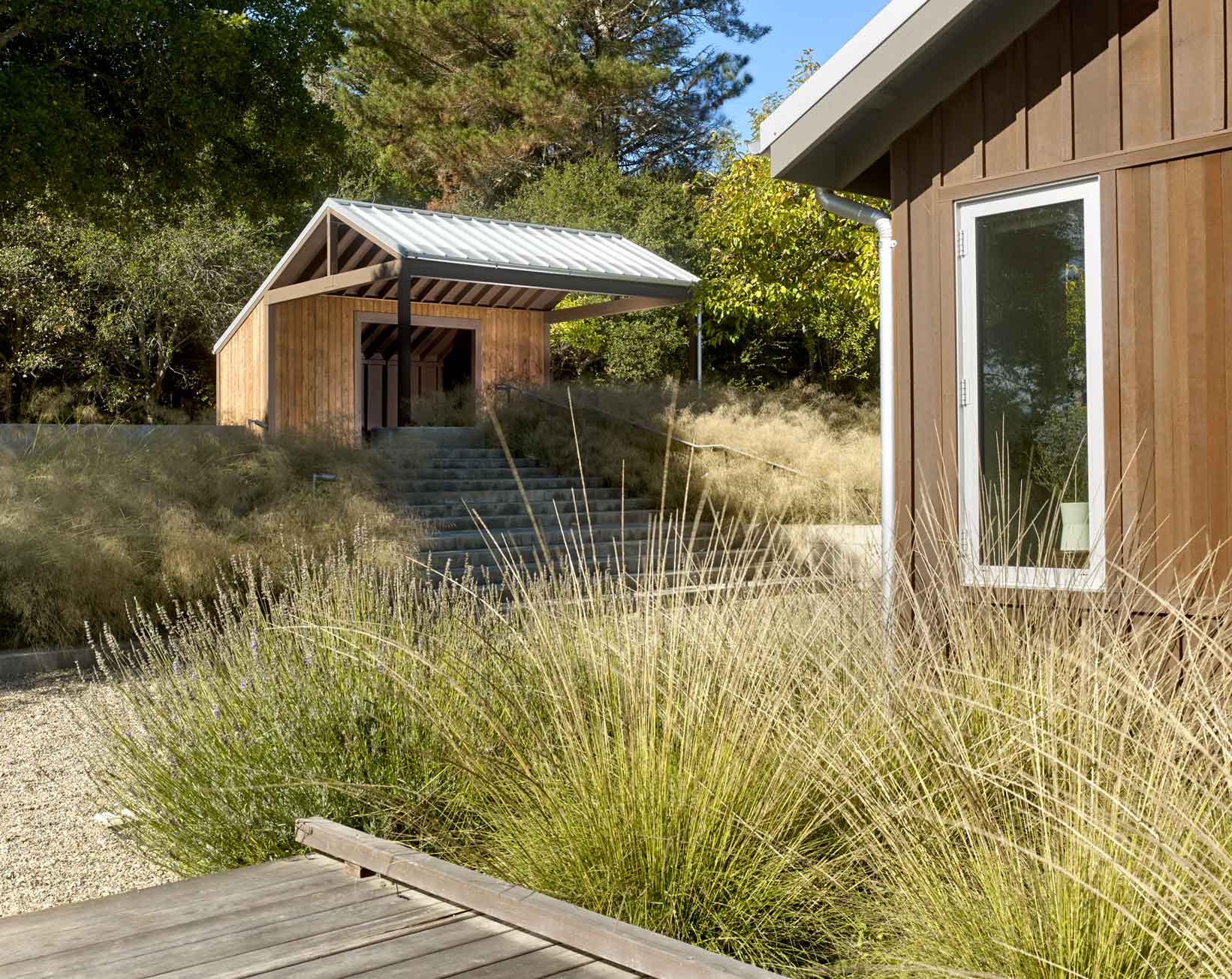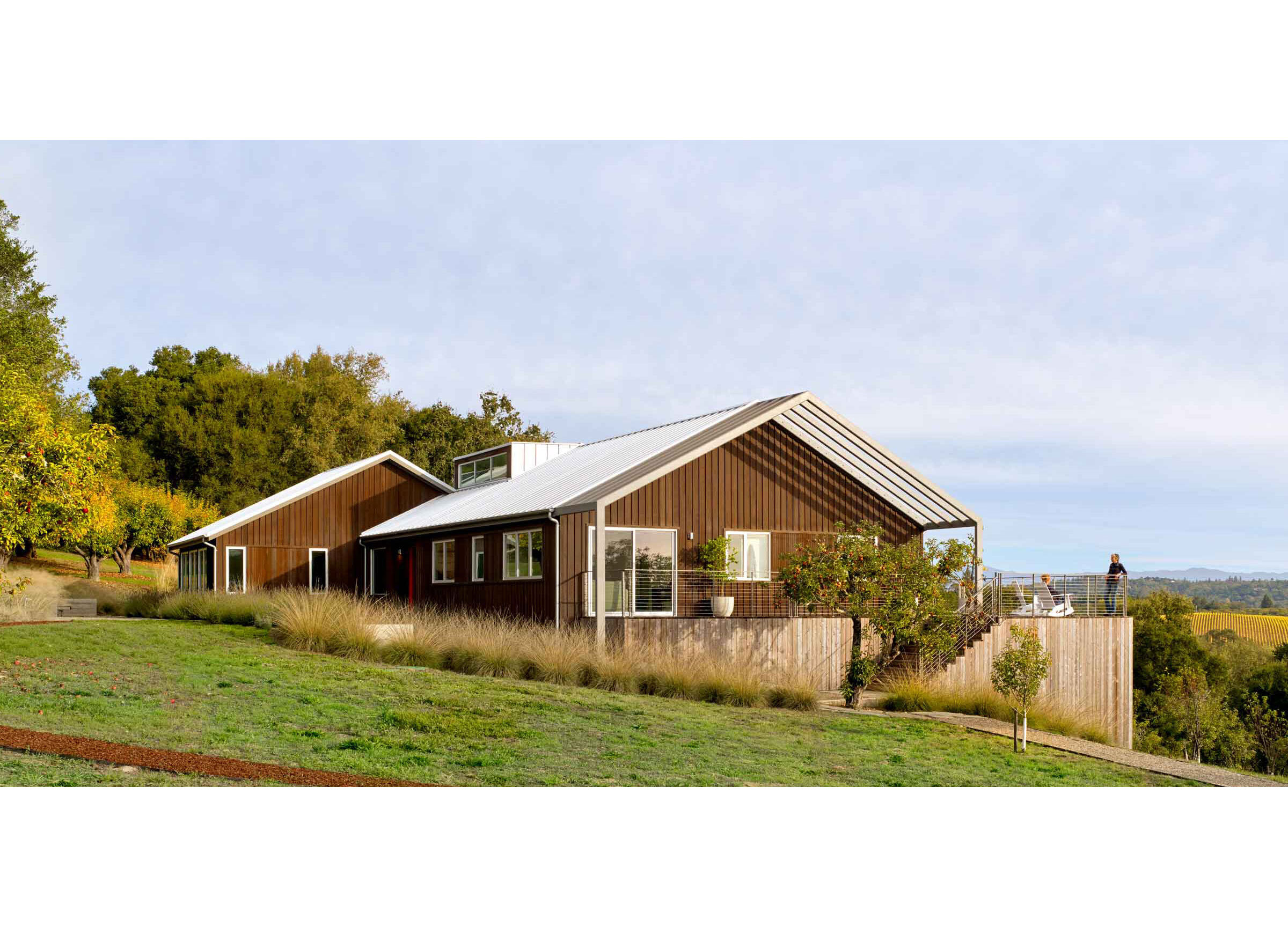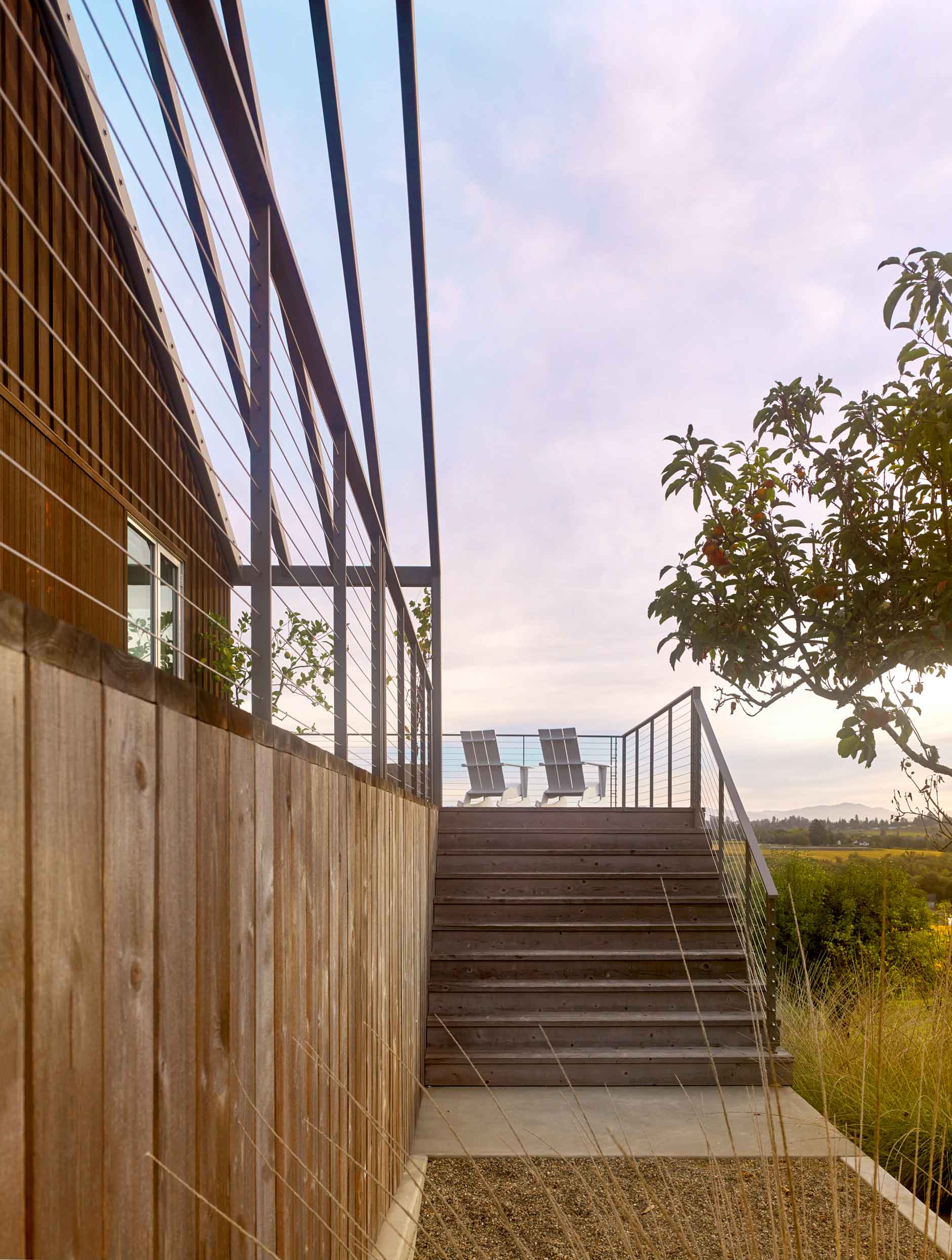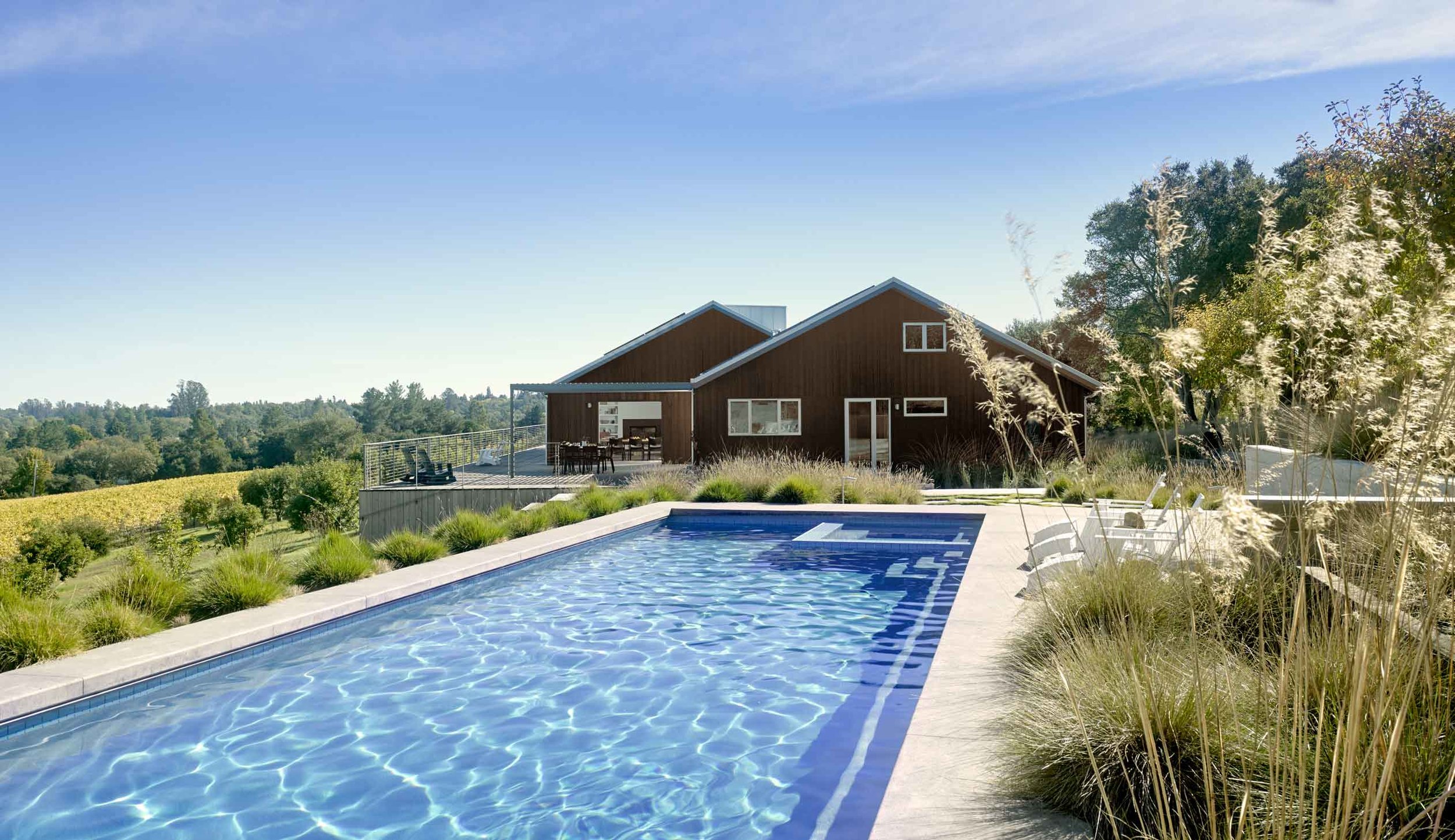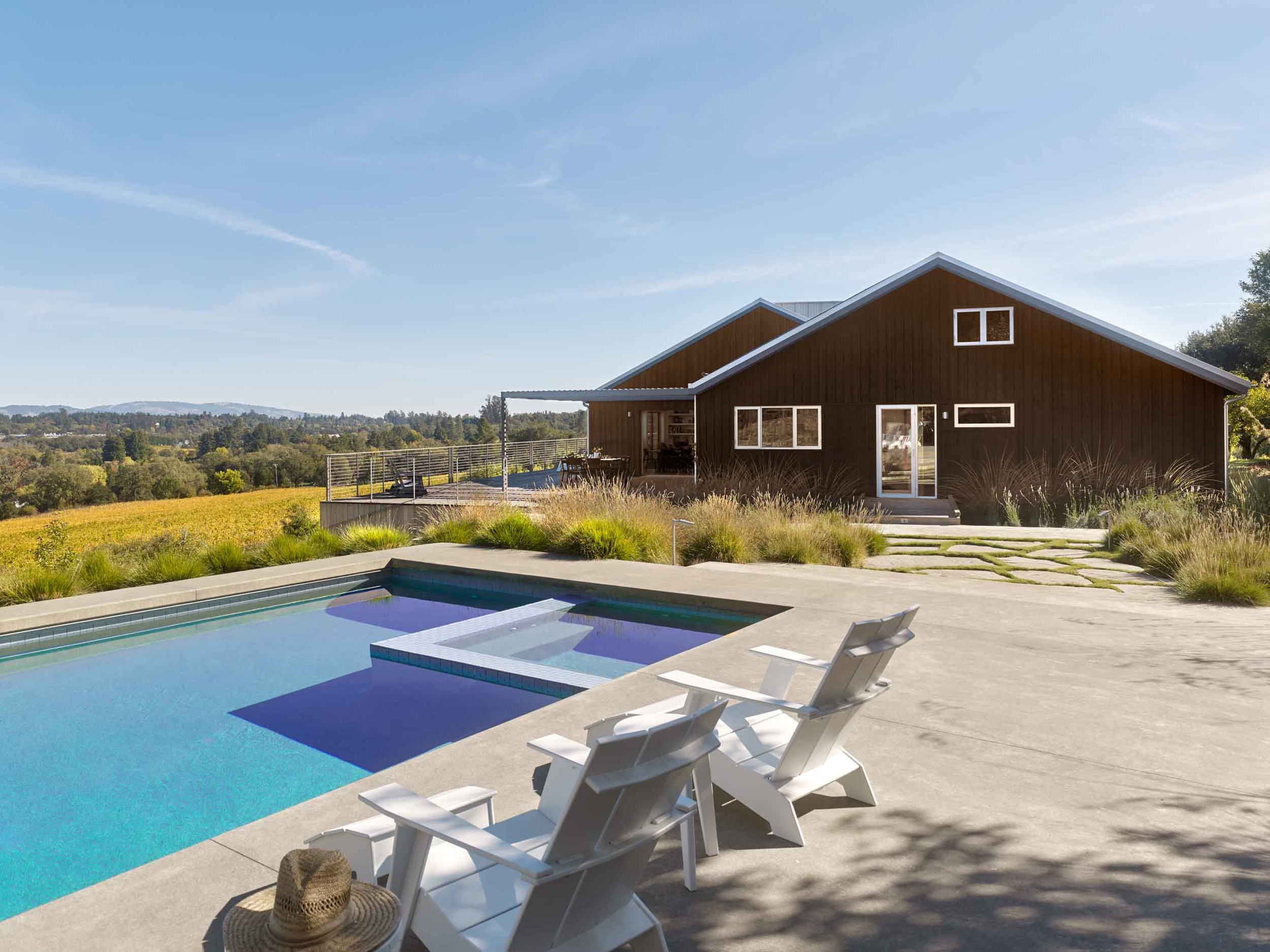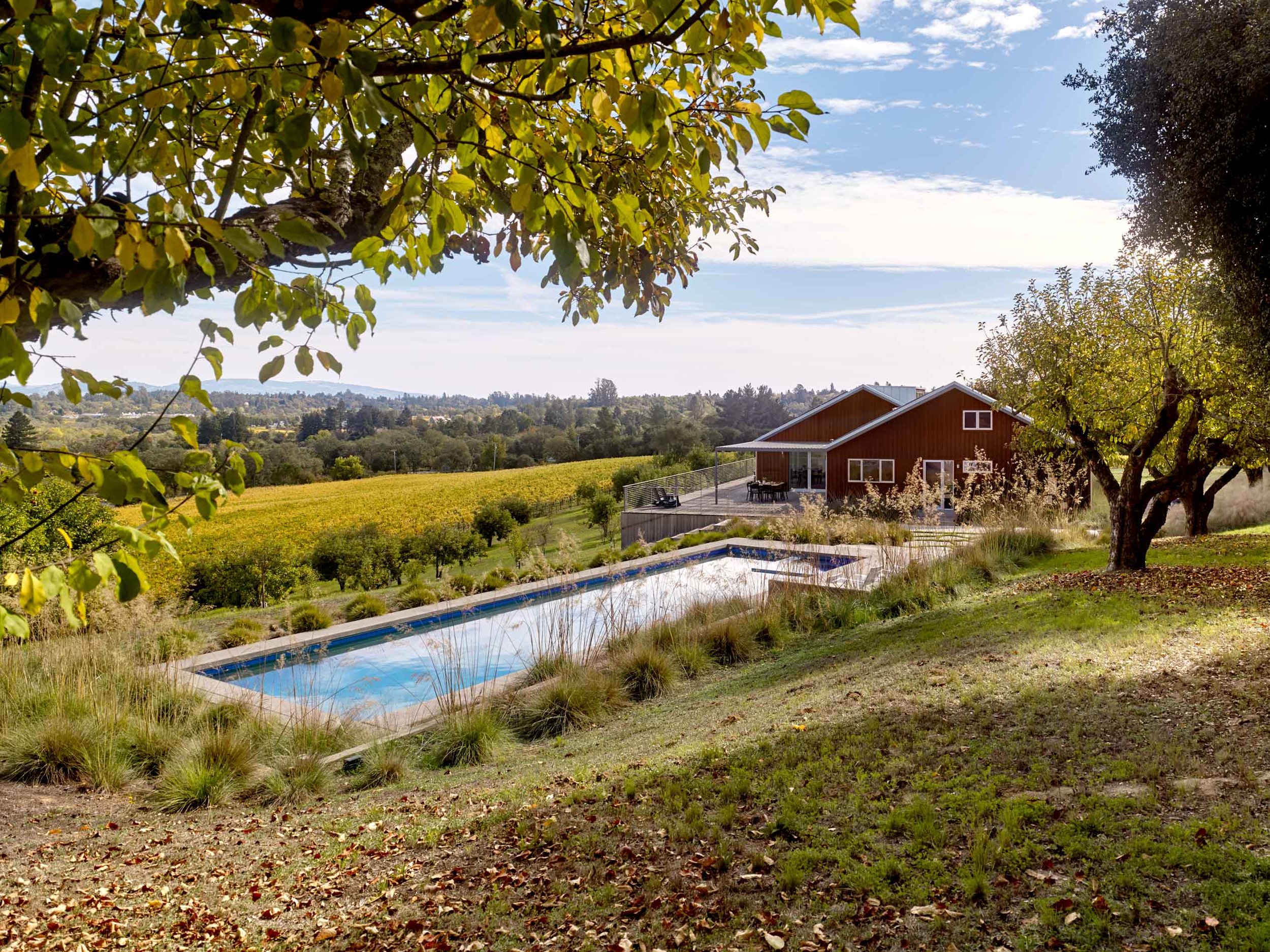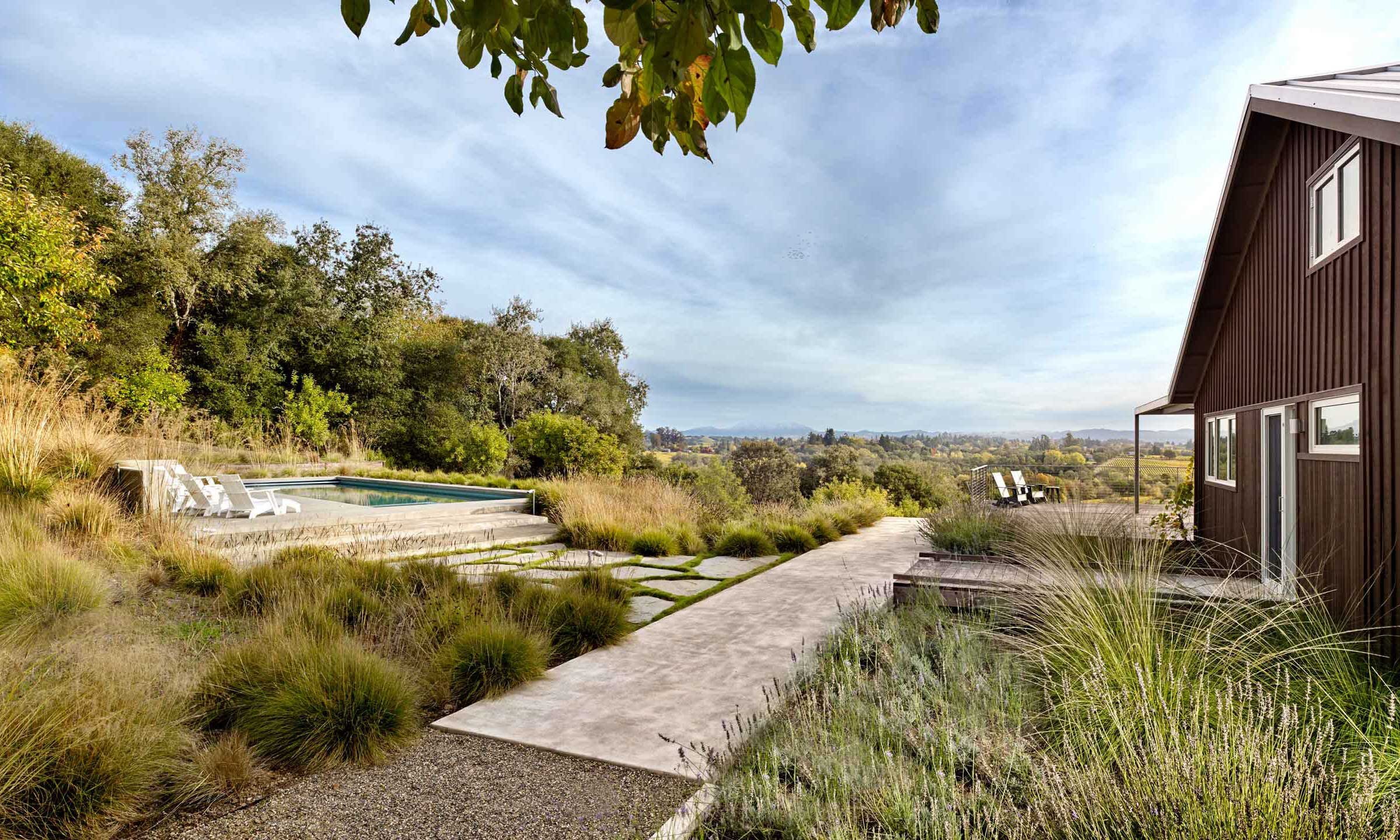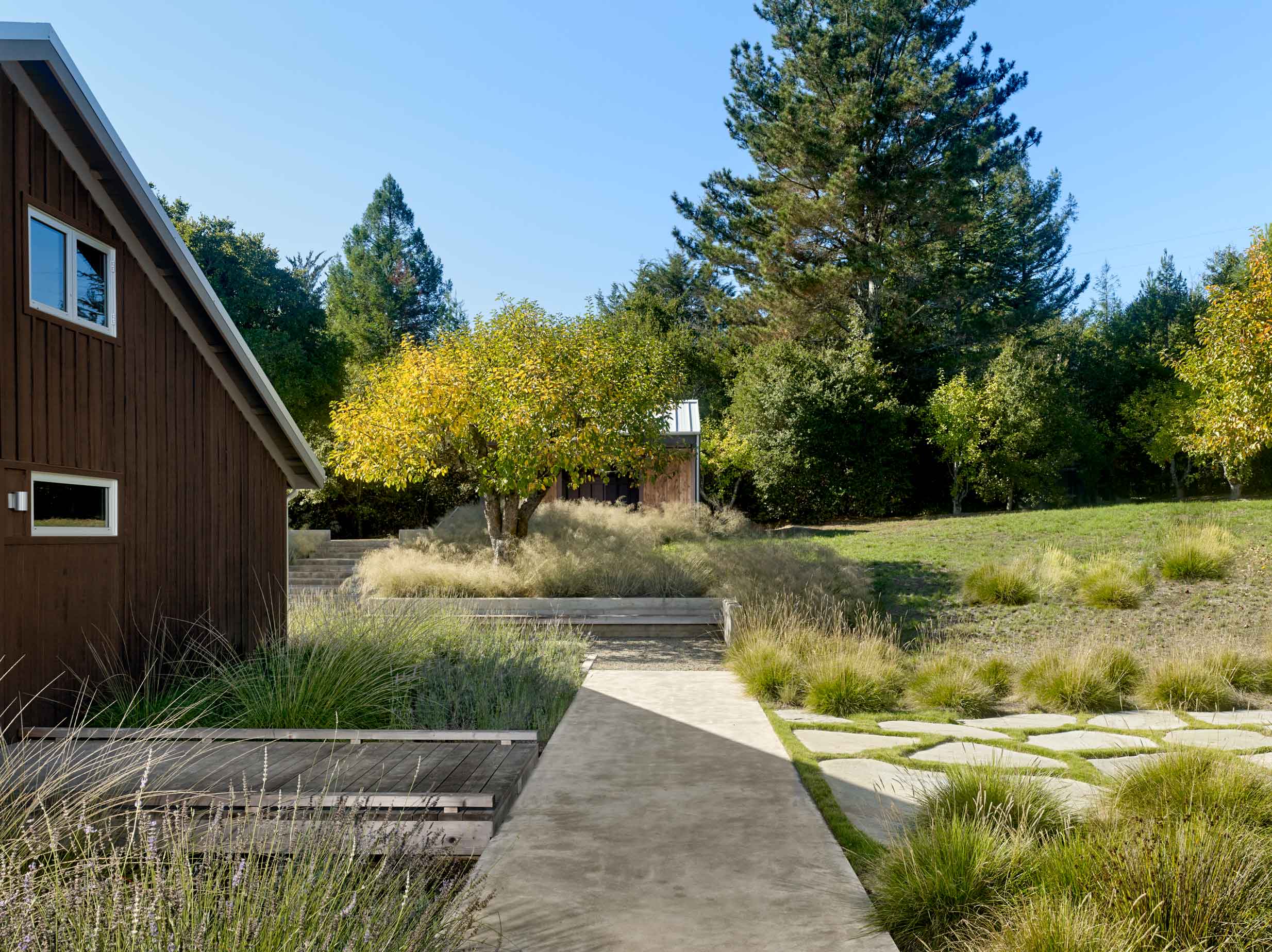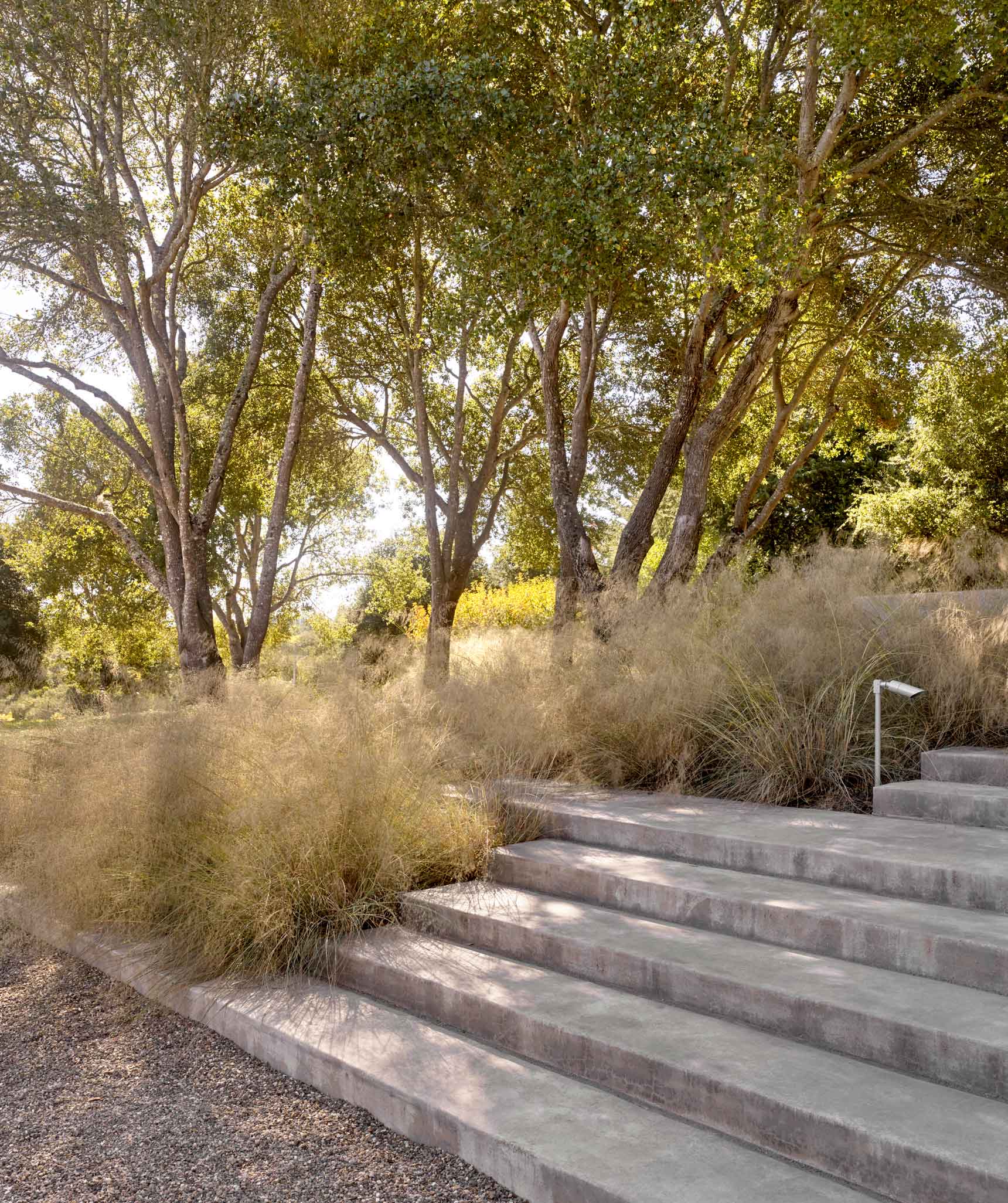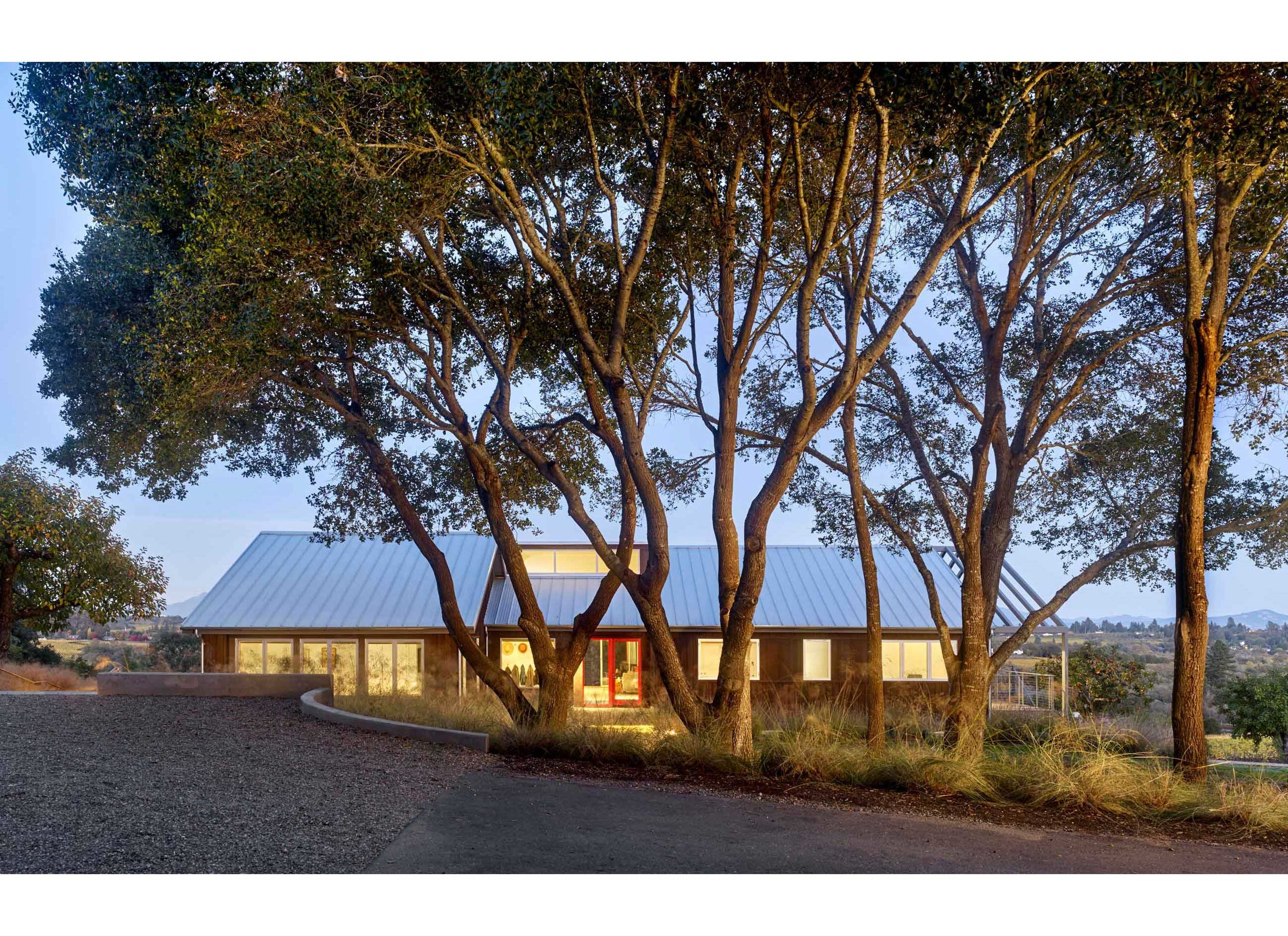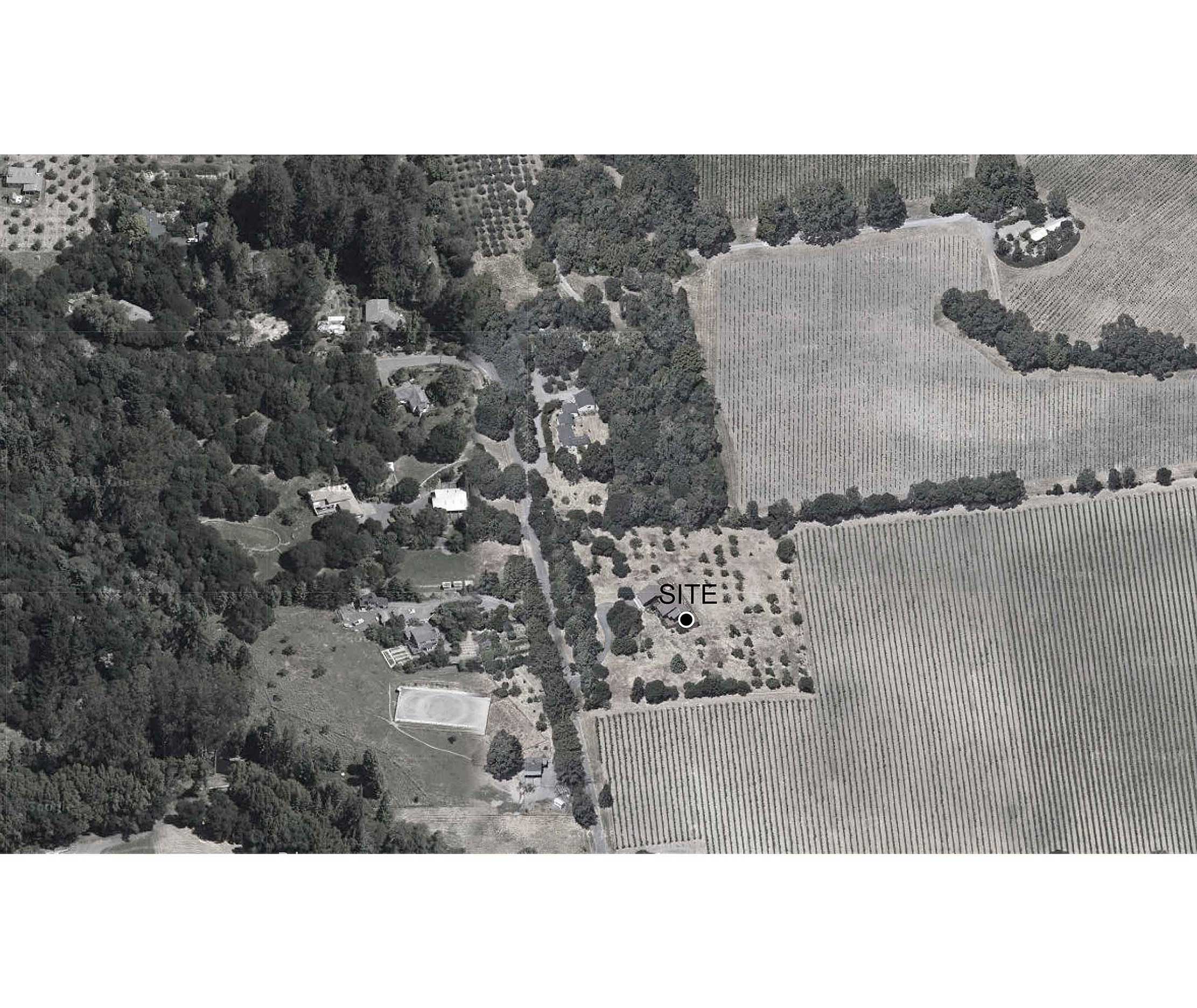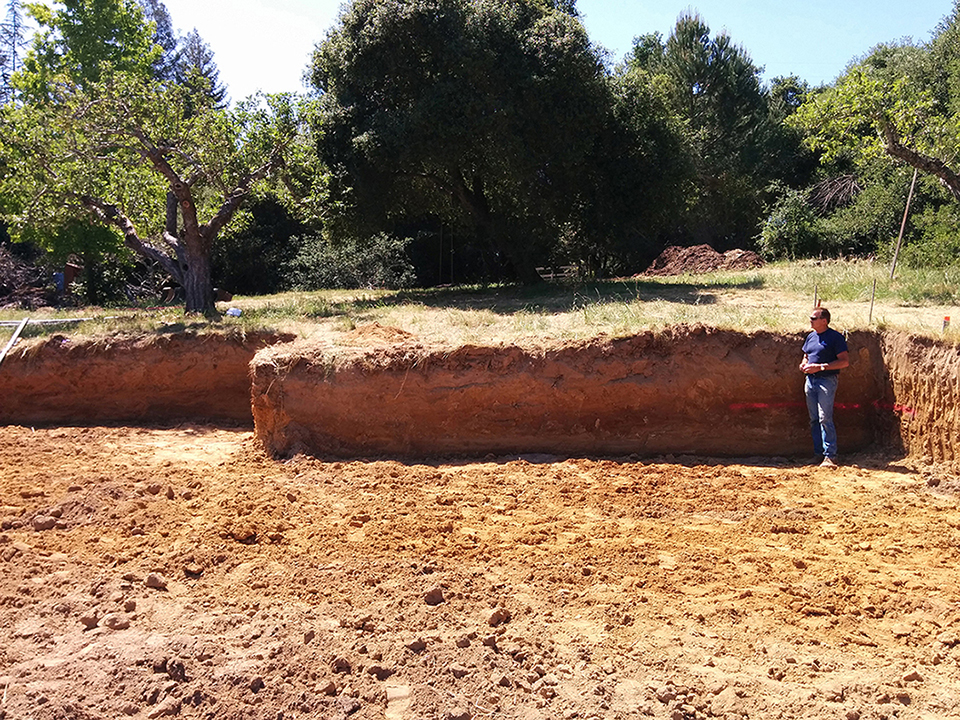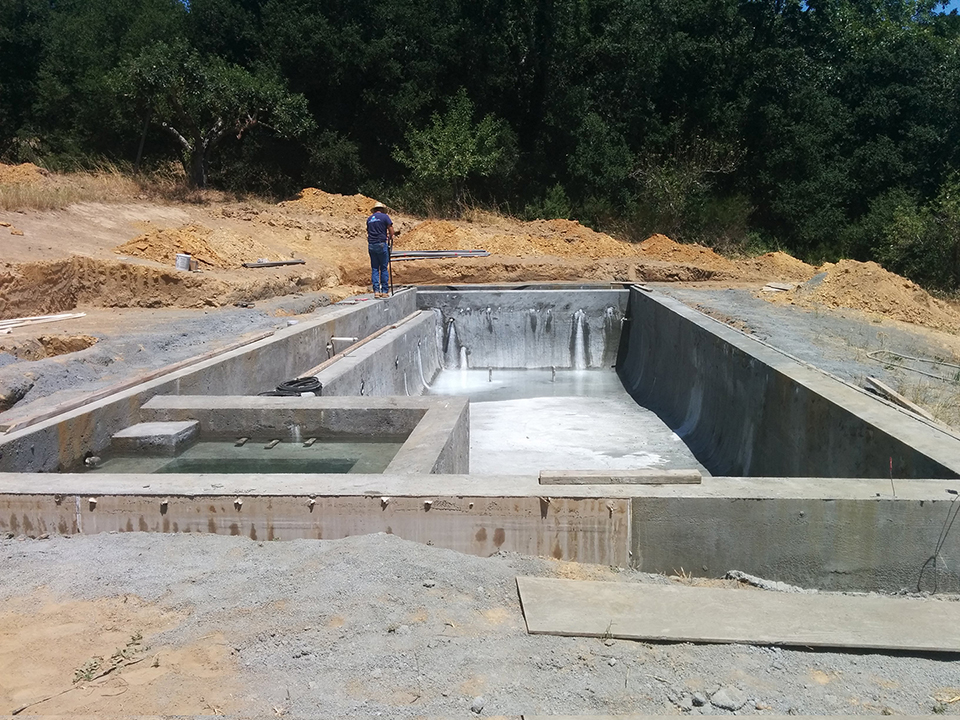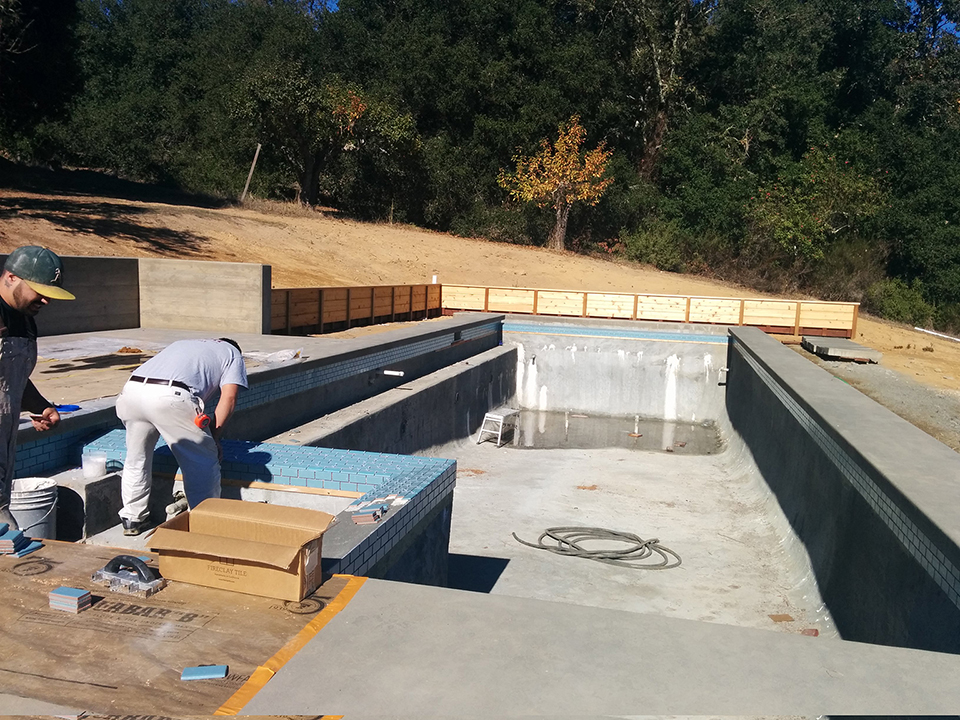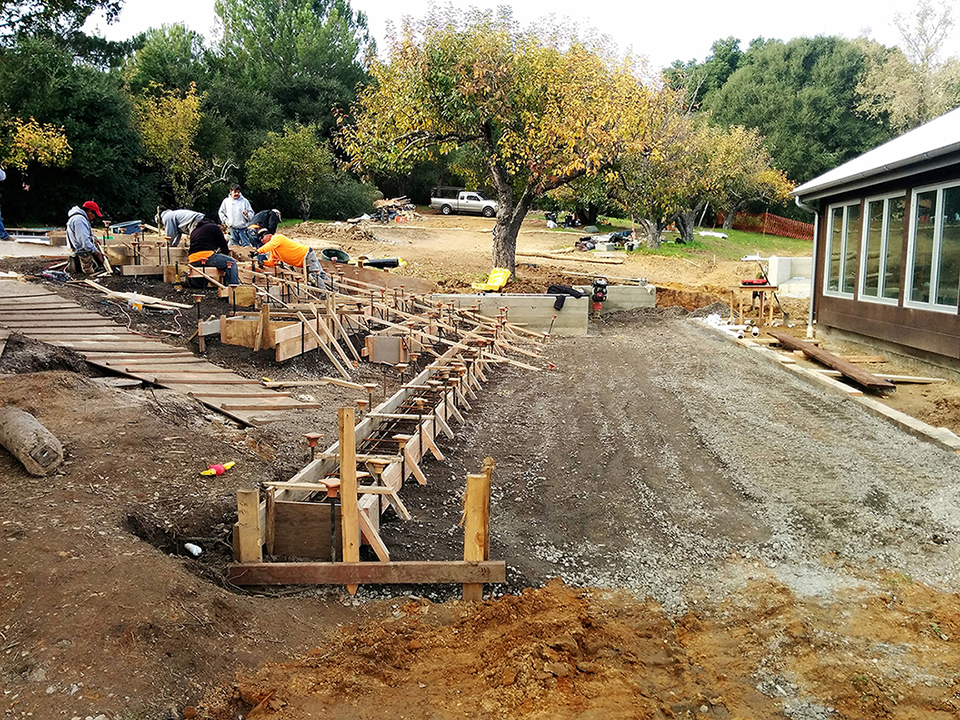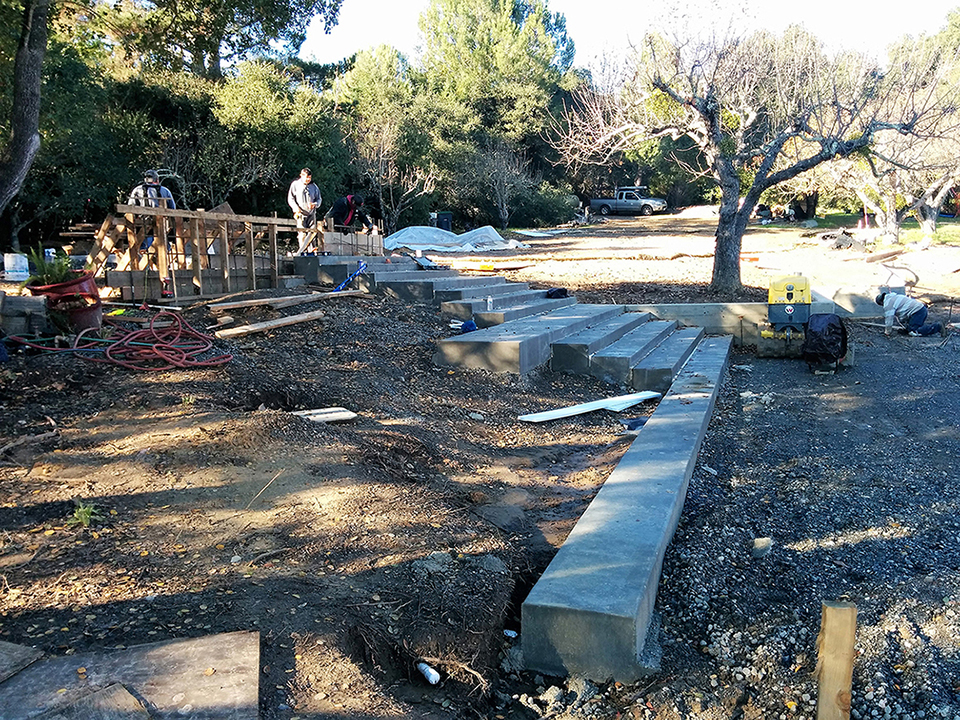Where Agriculture Meets Coastal Woodlands
Sebastopol, California
Honor Award, American Society of Landscape Architects Honor Award, American Society of Landscape Architects, Northern California Chapter Merit Award, American Institute of Architects, Redwood Empire Chapter, (Cary Bernstein Architect)
The three-acre site is at the intersection of coastal oak woodlands and cultivated fields of vineyards and Gravenstein apple orchards. The house and an existing neglected Gravenstein apple orchard share the property with coast live oaks that have gradually reclaimed the hedgerows and sections of the orchard that died. Where the apple trees have succumbed to the oaks, the design allows the oaks to reclaim their natural habitat. In areas where the fruit trees are still healthy, the agricultural history of apple cultivation is preserved by restoring portions of the orchard with new trees.
The open landscape and spectacular views dictate a design that intervenes with subtlety. The introduction of simple forms and the use of vernacular materials are used as means to appreciate the natural beauty and history of the site. Upon entering the property, the concrete steps, board formed concrete, gravel courtyards, and a wood bench recall the utilitarian materials that are typical in the farming community. The orthogonal concrete platforms focus the attention on the vineyards in the distance while highlighting the delicate textures and patterns of lights and shadows of the native grasses. The “arms” that extend from either side of the house to the pool decking and gravel walk to the vegetable gardens define the region where the farmed and orthogonal patterns of the vineyards and orchard meet the less controlled landscape consisting of live oaks and California fescue. A wood bridge spans a stretch of deer grass before entering the house at the front and side yards. The concrete walk engages the distant landscape and connects the entry courtyard to the rear deck and terminates with wood steps to the orchard below.
Because of a scarcity of water, the terrain is graded to utilize roof run-off and rainwater as sources of irrigation for the more water demanding apple orchard. Water is directed through a shallow swale between the pool and the house, terminating in a deep gravel trench that holds water during heavy rains and slowly releases it to the apple orchard at the lower property. Due to disease, neglect, and age, half of the existing Gravenstein apple orchard was replaced with ‘Red Fuji’ and ‘Pink Lady’ apple varieties grafted to a drought and high temperature resistant rootstock. In the oak woodlands, a competing understory growth of exotic shrubs were removed and replaced with native California fescue. Native grass and wildflower seed mix reduce the number of invasive non-native plants that covered the site before construction. A cover crop of crimson clover was planted between the fruit trees in the orchard. After the carpet of red flowers bloom, the legume is tilled into the ground which provides nitrogen to the soil, protects the soil from erosion, and competes with weeds.
Landscape Architecture: Longwell MacDonald, Principal, Jan Longwell | Architecture: Cary Bernstein Architects | Landscape Contractor: Siteworks Landscape | General Contractor: Tomrose Construction | Pool Contractor: Stan Johnson Pools | Photography: Cesar Rubio

